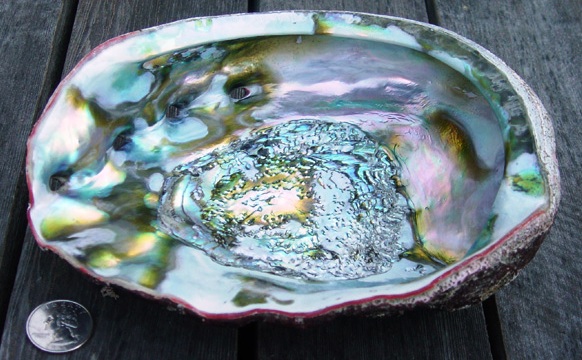Abalone Varieties:
Fresh California red abalone is the variety most generally available, along with the smaller green, pink, and black abalone.
Australian Abalone (Haliotis Rubra) is a delicious mollusk with a refined flavor that is completely non-fishy.
Abalone Health Benefits:
Expert believes that abalone may help prevent and treat debilitating health conditions including arthritis.
Abalone is highly regarded in Asian cultures for its health benefits and is believed to promote healthy eyes, alleviate colds, reduce fluid retention and improve circulation.
Abalone Nutrient Content: 100 g (raw abalone)
Vitamin E: 3.4 IU
Vitamin B12: 0.6mcg
Selenium: 38mcg
Omega-3: 0.49 g
Magnesium: 40mg
Sodium: 301 mg
Protein: 17.1 g
Calories: 105 g
Total Fat: 0.76 g
Cholesterol: 85 mg
How to Prepare Abalone:
To remove the meat from the shell, cut the connector muscle, then pry out the meat. Trim and discard the viscera, remove dark skin from the foot, and scrub the meat to remove the black coating. Cut steaks against the grain of the meat, and pound each slice.
To freeze fresh abalone, clean the muscle and cut it into steaks. Wrap steaks individually in freezer wrap and over-wrap with a heavy plastic bag. Freeze no longer than two months. Before use, defrost abalone overnight in the refrigerator. Never defrost at room temperature. To quick-thaw, run cold water over abalone that is enclosed in a watertight wrapper.
How to Buy Abalone: The freshest abalone is stored on ice, still in the shell; abalone should not smell fishy.
How to Store: Keep abalone cool on the trip from the market to your house. Store in the coldest part of your refrigerator in a bowl covered with a wet towel, and use within 24 hours.
How to Cook Abalone: Quick cooking is essential to keeping abalone tender. Heat a frying pan until very hot; add vegetable oil; and cook the abalone about 30 seconds on each side.
Availability: Abalone is available in fish markets and Asian specialty markets. Abalone is sold live or frozen in the shell, as ready-to eat fresh or frozen pounded steaks, canned and dried. In dried form it must be soaked for several days before using.
Commercial Sources: Abalone is now being farmed in the waters of California and Hawaii, increasing the supply. The waters of Australia produce some of the finest abalone in the world.



 Contact Us
Contact Us







 Hospitals
Hospitals
 Doctors
Doctors
 Diagnostic
Diagnostic
 Pharmacy
Pharmacy
 Health Tips
Health Tips
 Blog
Blog

















Comments